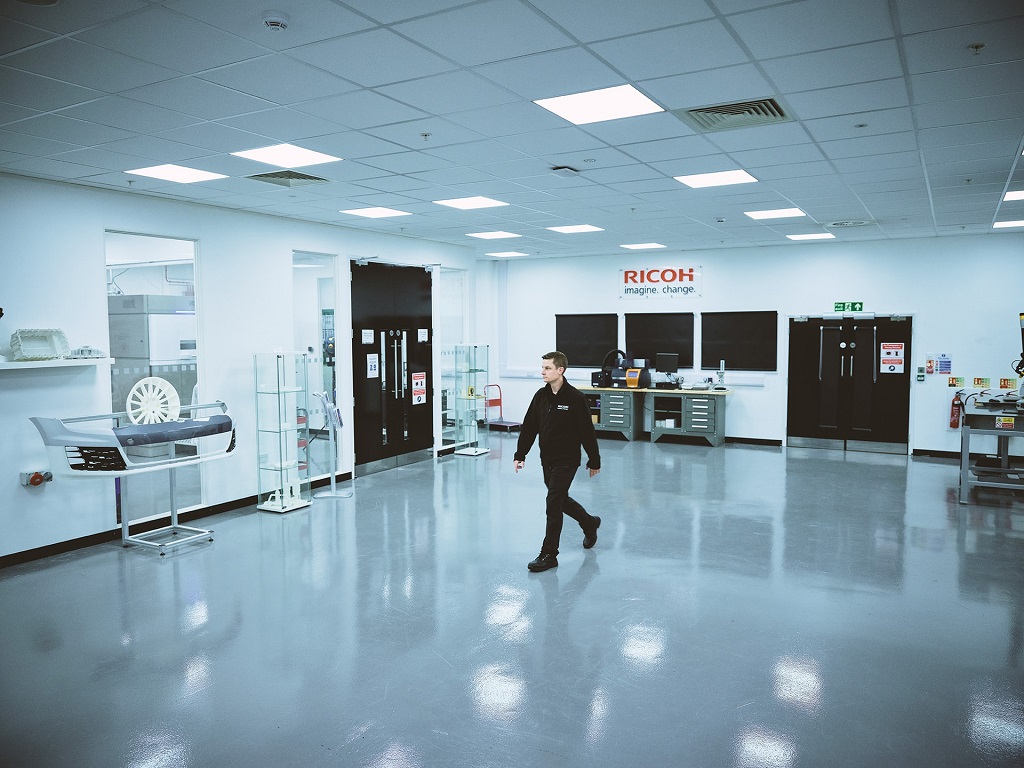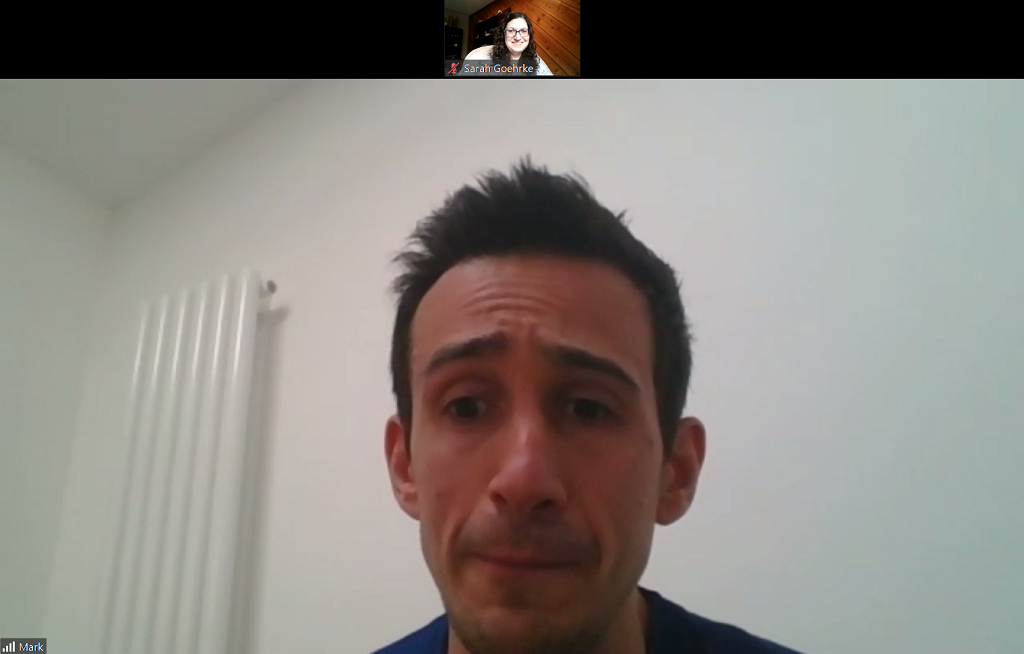
After a few months wondering what was going on with Ricoh’s 3D printing strategy, we spoke with the team for an update.
Early this year, Kerry wondered what was up at Ricoh: were they making 3D printers, selling 3D printers, offering access to 3D printers, focusing on materials, acquiring new 3D printing properties…? The questions were many and, Mark Dickin, Additive Manufacturing & Moulding Engineering Manager at Ricoh UK Products, confirms, valid.
There was some mixed messaging to be sure about where Ricoh stood in the additive manufacturing space, Dickin accepted when we spoke recently, and he’s been keen to clear that up.
We went on-the-record with a chat to catch up about just what’s happening at Ricoh when it comes to 3D printing, and what the future there might look like.
Ricoh Businesses & 3D Printing
Ricoh is a massive global organization headquartered in Japan, tracing its roots to 1936.
By the numbers:
- Number of Consolidated Companies: 229 companies (as of March 31, 2020)
- Employees: 90,141 (on consolidated basis, as of March 31, 2020)
- Ricoh redefined its business domains and adopted new operating segments as of April 1, 2017 into the following business domains:
- Office Printing
- MFPs (multifunctional printers), copiers, laser printers, digital duplicators, wide format, facsimile, scanners, related parts & supplies, services, support and software
- Office Service
- Personal computers, servers, network equipment, related services, support, software and service & solutions related to document
- Commercial Printing
- Cut sheet printer, continuous feed printer, related parts & supplies, services, support and software
- Industrial Printing
- Inkjet head, imaging systems and industrial printers
- Thermal Media
- Thermal media
- Other
- Optical equipment, electronic components, semiconductor devices, digital cameras, industrial cameras, 3D printing, environment and healthcare
- Office Printing
That “other” category is interesting: on the Businesses page of the Ricoh site, “New Development” in that category includes this entry:
“Additive manufacturing
We provide total solutions, integrating everything from 3D printer sales, consulting, 3D data design and modeling.”
The linked page goes to a 2015 press release announcing the RICOH AM S5500P, an SLS 3D printer that, as Kerry noted in January, doesn’t seem to be for sale anymore. In fact, the 3D Printers page is totally blank on the Ricoh site.
In short: I too see where questions might be raised. What’s going on with Ricoh’s approach to 3D printing?
The Small Startup Inside The Large Organization

Until 2019, it turns out, “Ricoh’s European operation had been led by Japan,” Dickin told me.
Ricoh Europe has been the business segment at the vanguard of the company’s 3D printing efforts. As we’ve seen, large organizations often have difficulty mobilizing projects that are some distance from the heart of the original business strategy, as well as far from the HQ. 3D printing has been proving a strong strategic advance for many traditional inkjet printing companies as they move into a new dimension of printing. Like many of these companies, Ricoh is now approaching its 3D printing operations with the mentality of a small startup — backed by the larger organization behind it.
“Now, from a European point of view, we are in control of our own destiny,” Dickin explained.
Dickin is based in the UK, at a site with more than 800 people, “manufacturing lots and lots of things.”
“Now we are in control of our own strategy, called Europe. We are taking our own destiny in our hands, and still part of a huge organization. That makes us different from other service bureaus. We have a team of engineers that’s been growing: material scientists, design engineers, a whole team.”
So what makes them so different now?
“We don’t want to just print a file; we want to develop things. We have an R&D focus. That leads to certain examples to back that statement up,” he said.
Among those examples is a partnership with Austria-based TIGER, announced at Formnext 2019, to develop a 30% flame retardant material for specific applications.
Ricoh has a materials testing facility at their UK plant, which Dickin noted is “key to us: if a customer wants a certain material property, if it’s not available we’ll try to develop it alongside them. We want to add value there and listen to the customer. It’s part of the journey. We want partnerships, we understand from our core business that is the way to pursue success. That’s why we’re different in the additive manufacturing space.”
Furthering their reach in that space is Ricoh’s pursuit of the ISO medical standard to add to their other ISO certifications.
“That’s not just on the back of this horrendous COVID-19 scenario, but before that we’ve had a lot of medical engagements,” Dickin clarified. “Why I feel they come to Ricoh is our unique offering, our engineering resources. Our back office system is unrivaled: fully digital, full traceability — it’s not people tracking on an Excel spreadsheet. It’s totally automated, totally seamless.”
Dickin mentioned as well Kerry’s follow-up article on Ricoh in January, exploring their new 3D print instant quote system.
“He wrote about our new and improved website, and that’s even further enhanced now,” he said. “Our e-commerce partner gives us more intelligence, more technical solutions than we had previously.”
Indeed, it took a little bit of navigating to get there, but Ricoh’s 3D services site is looking snazzy indeed. Frankly I only found it by looking for the TIGER partnership Dickin had mentioned, and following a link through that press release. It’s not necessarily the most intuitive route to discover this helpful site — but once found, it’s a nice wealth of detail on their 3D printing operations, and points to this being a strategy they are indeed serious about pursuing.
Ricoh 3D
Dickin noted that Ricoh is continuing its work in 3D printing — and now has laid the groundwork for a strategy to pursue.
“We’re not standing still. We’re an innovative company, and constantly developing. Materials, machine development — we really want to grow our business, and are focusing for the foreseeable future,” he told me. “We have a three-year plan, a newly in place design service that we will be offering. I think those are the main key points in terms of our improvements and strategy going forward.”
When it comes to additive manufacturing, Dickin and his team offer a solid understanding of the technology and its applications:
“We recognize it’s a technology of the future — and a technology of now.”
Ricoh COVID Response
As with many (most?) 3D printing operations these days, Ricoh is also mobilizing its 3D printing capabilities to respond to pandemic-driven needs.
The team has been 3D printing masks and shields for healthcare workers — and wisely turned away from only 3D printing.
“Because we also have a molding facility on-site, we proved the design using additive manufacturing. While the mold was being manufactured, we used 3D printing at volume, then moved to scale using injection molding, which really ups the scale. This can really complement our functionality using our core technologies; we have a unique additive manufacturing facility,” he said.
“A lot of people will use additive just to use it. We quickly recognized it’s not the right technology for scaling up these face shields, so we used molding and got that volume and output. It’s fantastic what people are doing — but they need to use the right technology.”
That’s a lesson many should be listening to: use the right technology for the best results. 3D printing has proven incredibly, incredibly helpful for immediate needs during this crisis — but to scale up most effectively, injection molding may be a better selection for mass production.
Via Ricoh Europe
